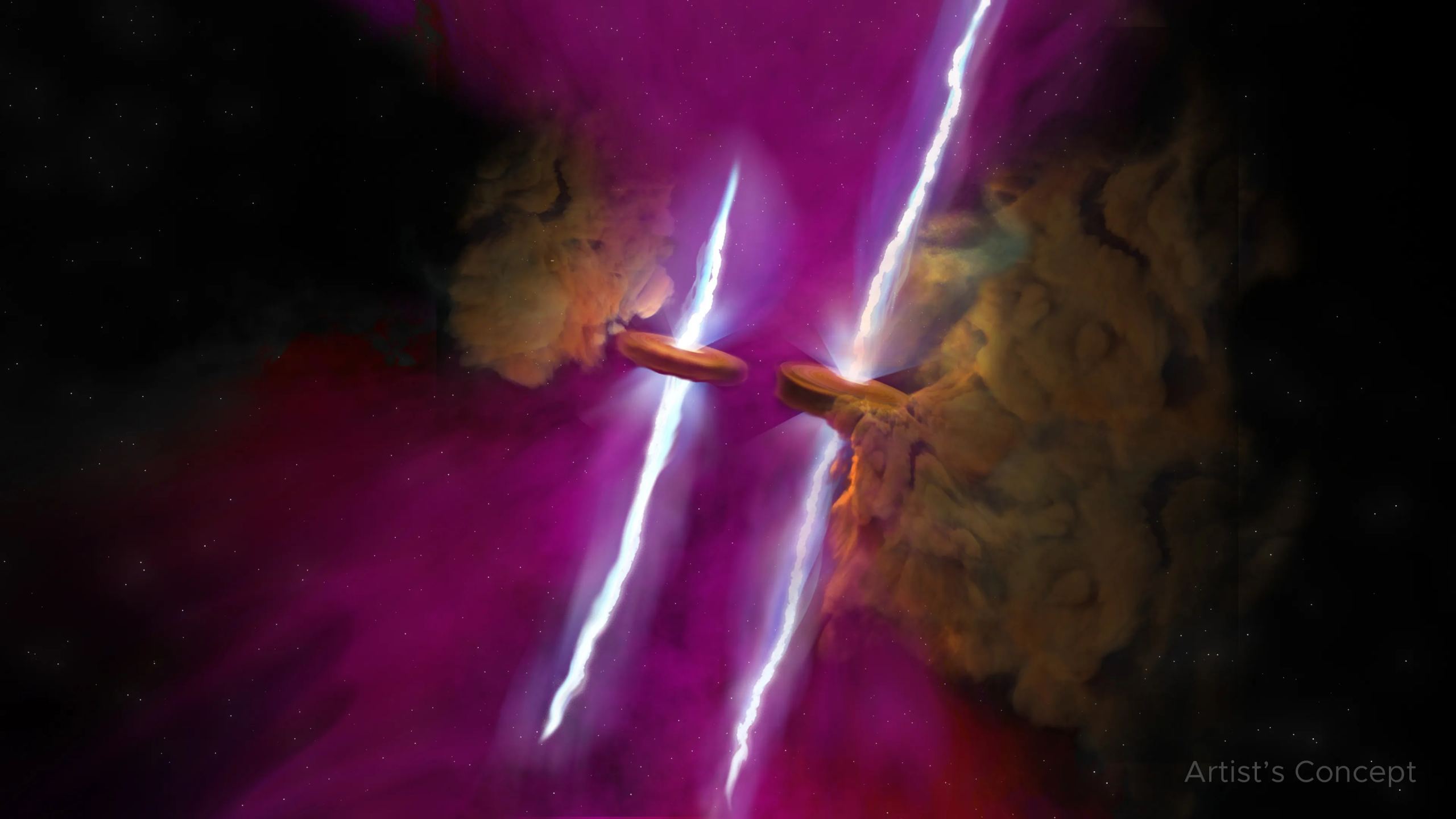Since it began operating in 2022, the James Webb Space Telescope (JWST) has revealed some surprising things about the Universe. The latest came when a team of researchers used Webb‘s Mid-Infrared Instrument (MIRI) to observe Rho Ophiuchi, the closest star-forming nebula to Earth, about 400 light-years away. While at least five telescopes have studied the region since the 1970s, Webb’s unprecedented resolution and specialized instruments revealed what was happening at the heart of this nebula.
For starters, while observing what was thought to be a single star (WL 20S), the team realized they were observing a pair of young stars that formed 2 to 4 million years ago. The MIRI data also revealed that the twin stars have matching jets of hot gas (aka stellar jets) emanating from their north and south poles into space. The discovery was presented at the 244th meeting of the American Astronomical Society (224 AAS) on June 12th. Thanks to additional observations made by the Atacama Large Millimeter/submillimeter Array (ALMA), the team was surprised to notice large clouds of dust and gas encircling both stars.
Given the twins’ age, the team concluded that these may be circumstellar disks gradually forming a system of planets. This makes WL 20S a valuable find for astronomers, allowing them to watch a solar system take shape. As noted, the Rho Ophiuchi nebula has been studied for decades by infrared telescopes, including the Spitzer Space Telescope and the Wide-field Infrared Explorer (WISE), the Infrared Telescope Facility (IRTF) at the Mauna Kea Observatory, the Hale 5.0-meter telescope the Palomar Observatory, and the Keck II telescope.

Infrared astronomy is necessary when studying particularly dusty nebulae since the clouds of dust and gas obscure most of the visible light of the stars within them. Thanks to its advanced infrared optics, Webb was able to detect slightly longer wavelengths using its MIRI instrument. Mary Barsony, an astronomer with the Carl Sagan Center for the Study of Life in the Universe (part of the SETI Institute), was the lead author of a new paper that describes the results. As she related in a recent NASA press statement.
“Our jaws dropped. After studying this source for decades, we thought we knew it pretty well. But we would not have known this was two stars or that these jets existed without MIRI. That’s really astonishing. It’s like having brand new eyes.”
Radio telescopes are another way to study nebulae, though they are not guaranteed to reveal the same features as infrared instruments. In the case of WL 20S, the absorbed light was visible in the submillimeter range, making ALMA the ideal choice for follow-up observations. However, the high-resolution mid-infrared data was needed to discern WL 20S as a pair of stars with individual accretion disks. This allowed the team to resolve stellar jets composed of ionized gas that is not visible at submillimeter wavelengths.
“The power of these two telescopes together is really incredible. If we hadn’t seen that these were two stars, the ALMA results might have just looked like a single disk with a gap in the middle. Instead, we have new data about two stars that are clearly at a critical point in their lives, when the processes that formed them are petering out.”
The combined MIRI and ALMA results revealed that the twin stars are nearing the end of their formation period and may already have a system of planets. Future observations of these stars with Webb and other telescopes will enable astronomers to learn more about how young stars transition from formation to their main sequence phase. “It’s amazing that this region still has so much to teach us about the life cycle of stars,” said Ressler. “I’m thrilled to see what else Webb will reveal.”
Further Reading: NASA

